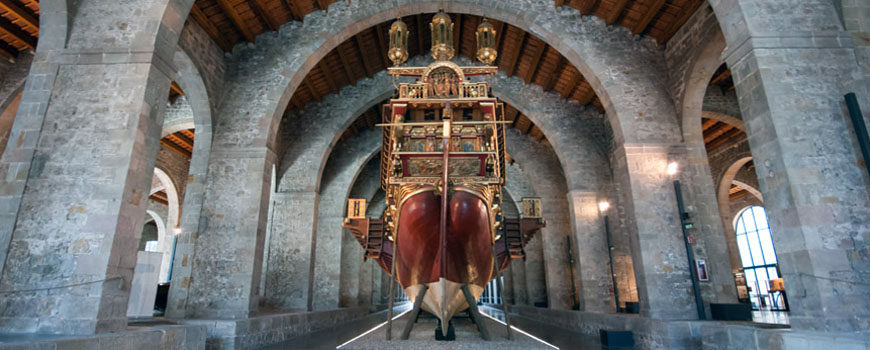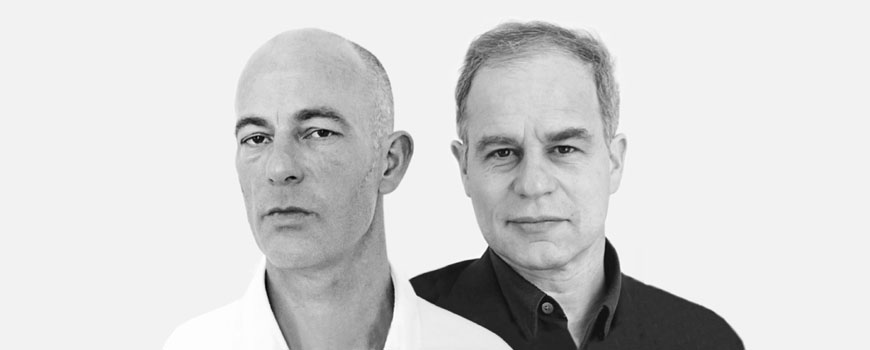Museu Blau, Barcelona
Catalunya, Spain

The Museu Blau is the main center of the Museu de Ciències Naturals, the Natural History Museum of Barcelona. Before being converted into a museum in 2011, the structure was popularly known as Forum Building.
The Museu Blau is housed in an iconic triangular blue building (hence its name) designed by acclaimed Swiss architects Herzog & de Meuron.
Along with the Museu Blau, the Barcelona Natural History museum network comprises other three centers in the city: the Martorell Museum, the Laboratory of Nature, and the Montjuïc Botanical Garden; yet, the Museu Blau is by far the most popular among them.
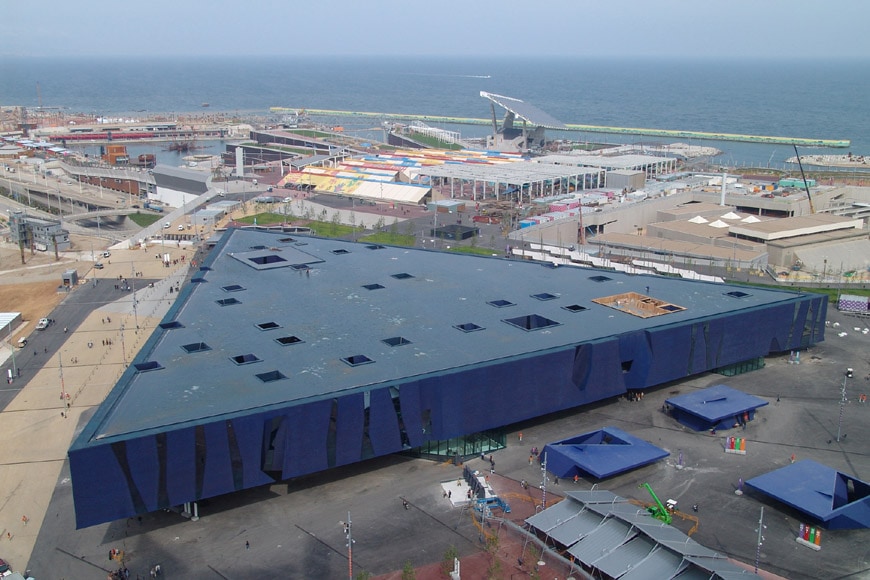
Aerial view of the Museu Blau in Barcelona; photo: Detlef Schobert
The building by Herzog & de Meuron
Located in Forum Park, on Barcelona’s waterfront, the museum’s building, designed by Herzog & de Meuron after winning an architectural competition held in 2000, was originally conceived as the main venue of the Forum Universal de les Cultures.
Hosted in Barcelona in 2004, the Forum event somewhat initiated the urban renovation of an area comprised between the eastern end of the Avinguda Diagonal street, the city waterfront, and the Ronda del Litoral; previously, this 40-hectare site was a sort of no man’s land, occupied by old industrial buildings and disused technical infrastructures.
Aerial view of the Forum Park area during the Forum Universal de les Cultures 2004 (photo: Almadavarez), and two views of the Museu Blau from the south-west and north-west; the tall white building in the last two pictures is the Diagonal ZeroZero skyscraper by Emba Estudi Massip-Bosch architects (photos © Inexhibit)
Herzog & de Meuron designed the 9,000-square-meter (96,875-square-foot), triangular-shaped Forum Building intending to maximize its functional flexibility, as well as to create an ensemble of relationships between the various functional areas, which included a 3200-seat auditorium, exhibition spaces, administration offices, and a restaurant.
The imposing horizontal shape of the building progressively detaches from the gently sloped ground level, thus creating a covered public plaza that can be used all year round.
Forum Building / Museu Blau, first-floor plan and typical section, images: Herzog & de Meuron
Views of the Museu Blau exterior from the south-west, north-east, and north; photos © Inexhibit
The strong functional and visual relationship between inside and outside is epitomized by a sequence of “voids”, cut through the building, which visually connects the public plaza on the ground floor with the more private and intimate spaces on the first floor and on the basement level of the Museu Blau, at the same time providing daylighting and ventilation to them. The architects also paid particular attention to materials. The rough, blue-colored plaster which coats the facades of the museum, crossed by several deep vertical fissures, creates a surprising contrast with the stainless steel cladding of the building’s bottom side, which also forms the ceiling of the public plaza and evokes the surface of the sea.
In 2011, the relocation of the Natural History Museum at Forum Park provided the building with a second life. The large covered public plaza and the flexible spaces which characterized the structure originally conceived for the 2004 Barcelona Forum of Cultures event proved to be also apt to fit the requirements of a modern science museum. In 2009, once again, both the project for the redevelopment of the building into a museum and the design of its core exhibition were developed by Herzog & de Meuron.
The covered plaza of the museum is clad with custom-designed metal tiles which recall the appearance of ocean water and sea waves; photos © Inexhibit
The blue home of science – the permanent exhibition “Planet Life”
The Museu Blau features a permanent exhibition, entitled Planet Life, temporary exhibition spaces, workshops, laboratories, a meeting room, a media library, a shop, and offices for the museum’s staff.
The main entrance of the museum is located under the cantilevered volume of the building; from here, the visitors, passing through a lobby located on the ground floor, reach the first floor, on which most of the permanent exhibition galleries are located.
Planet Life, the permanent exhibition of the Museu Blau, is a long journey through the evolution of the planet Earth from its origins to the present.
The exhibition is divided into three main sections.
The first section, mainly featuring multimedia and interactive installations, is dedicated to the Big Bang and the birth of our planet.
The second section, Biography of the Earth, brings the visitors across a captivating narration focused on the geological transformation of the Earth and the origin of life.
Finally, Earth Today is the largest section of the museum’s permanent exhibition and, through a selection of 4,500 pieces from the museum’s collection, depicts the surprising diversity of the life forms living on our planet.
Overall, Planet Life is a fluid and captivating voyage into science; exhibition areas alternate with relaxing spaces – daylit by a sequence of “fissure” windows cut in the facades -, and 4 special thematic areas in which various topics related to natural history and to the relationship between man and nature are further investigated and developed.
A key point of Planet Life is how it uses the objects it features to create a compelling visitor’s experience: some exhibits are showcased with great emphasis on their visual impact and physical presence, displayed and illuminated like they were classical sculptures; while some others are showcased in massive glass cases full of dozens of specimens – including fragments of rocks and minerals, fossils, skeletons, and stuffed animal bodies – creating a kaleidoscopic effect which remembers that of the “cabinet of curiosities” of the Renaissance period.
Similarly, also the interactive exhibits have been conceived as a combination of beautifully-made enlarged specimen reproductions (fossils, microorganisms, cells) and vertical touch-screens that, by moving along a rail, magnify the detail of a specimen and provide information and scientific descriptions on it through an interactive interface.
Along with permanent exhibition galleries, the museum includes spaces for temporary exhibitions – usually focused on earth science, natural history, and scientific expeditions -, an auditorium, a media library, a space especially aimed at children called Science Nest, and a shop. The museum’s building is fully accessible to physically impaired persons.
A metro station is located next to the museum (station: Maresme-Forum); the building can also be reached in about a one-hour’s walk from the Rambla and the historical heart of Barcelona through the city’s waterfront, Avenida del Littoral, and the former Olympic Village district.
The entrance lobby of the Museu Blau from below and from above, with a skeleton of a fin whale (Balaenoptera physalus) suspended over the main staircase; photos © Inexhibit
Views of the exhibition section “Biography of the Earth”, the exhibition includes an array of interactive devices which provides detailed information on the specimens on view; photos © Inexhibit
Views of the permanent exhibition of the museum, which skilfully combines physical and digital exhibits; photos © Inexhibit
Cover image: View of the Museu Blau from the west; photo © Inexhibit
How our readers rate this museum (you can vote)
copyright Inexhibit 2025 - ISSN: 2283-5474

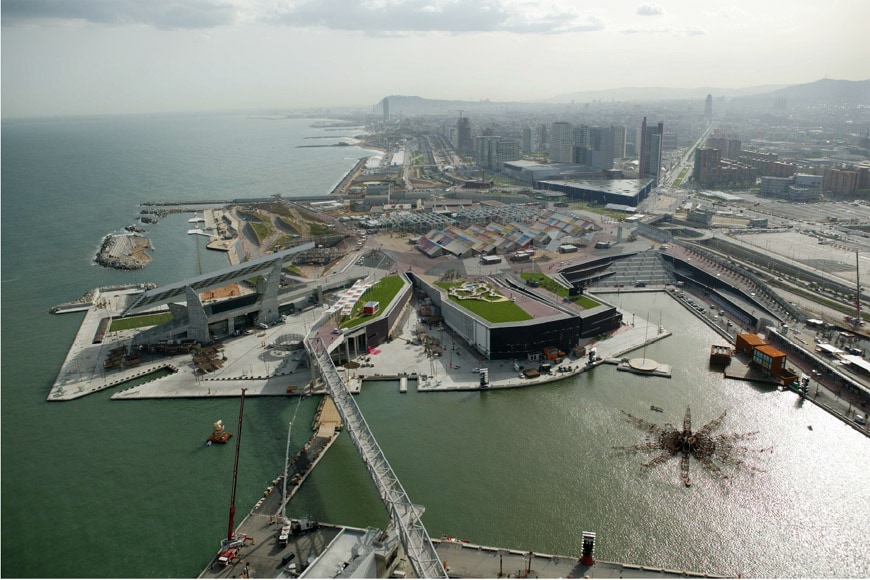




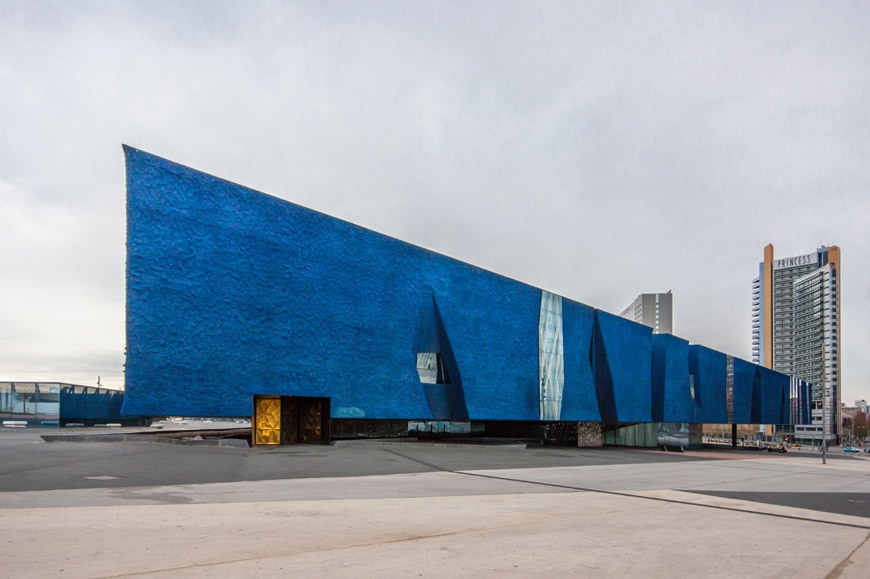







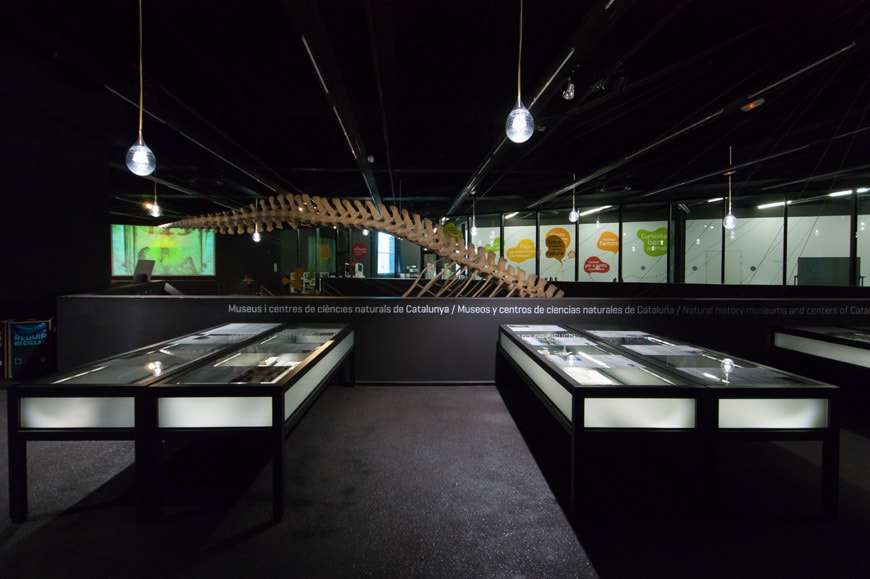




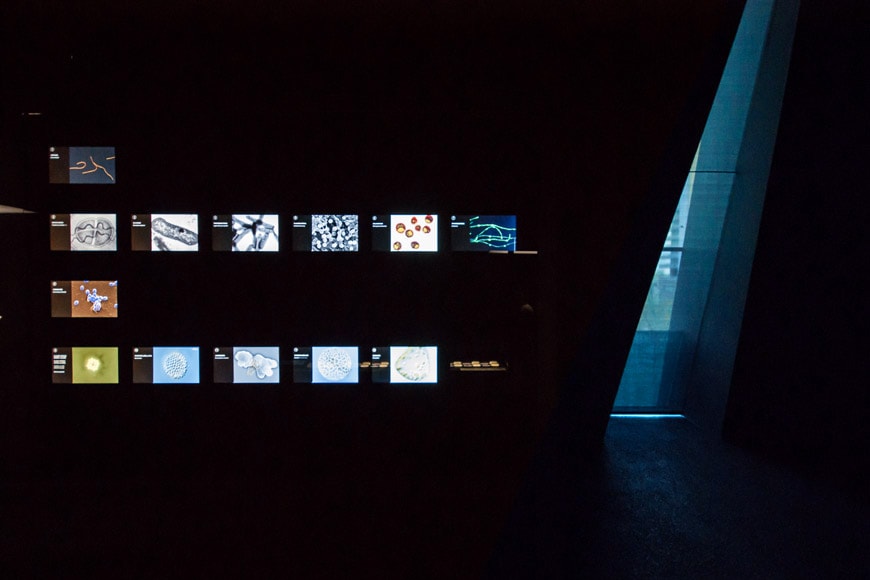






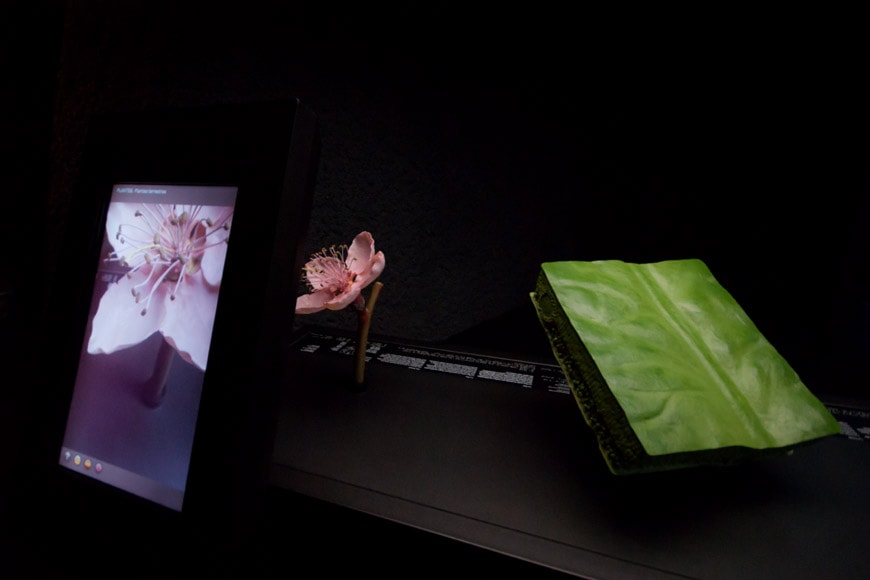

 (10 votes, average: 4.30 out of 5)
(10 votes, average: 4.30 out of 5)
